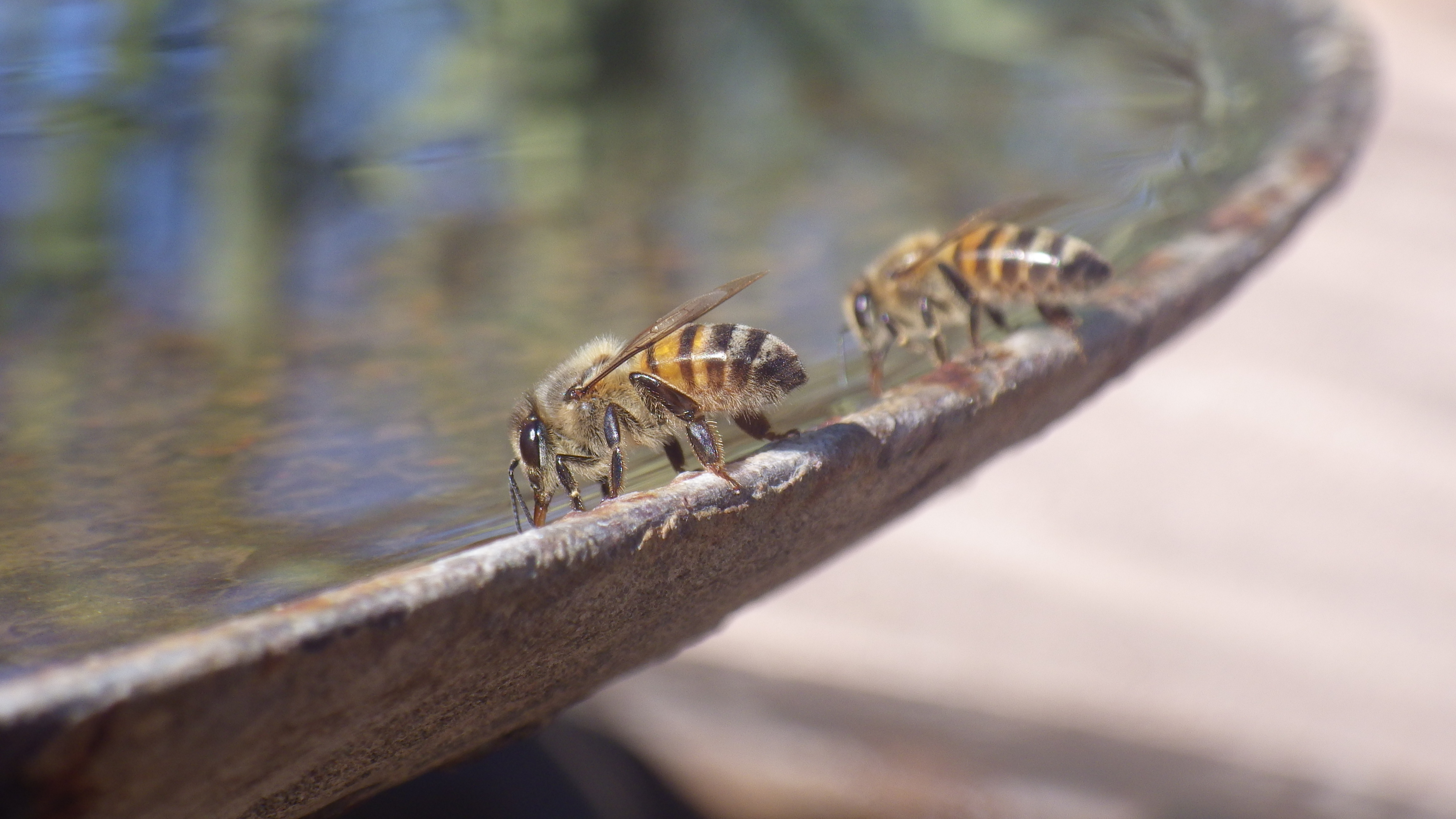Have you ever wondered at how some animals, like kangaroo rats, can survive in hot or dry places? New research from our lab suggests that some bees can be quite good at tolerating heating up or drying out, but not both at the same time.
In a recent paper published in Scientific Reports (https://www.nature.com/articles/s41598-018-38338-0), PhD student Justin Burdine and Dr. Kevin McCluney found that honeybees are very sensitive to drying out, but can handle the heat, while striped sweat bees can tolerate dehydration, but can’t take the heat. Thus, different aspects of climate change, like changes in precipitation or temperature, are expected to have different effects on different species.

Honeybees drinking from a fountain
These findings are important for people living in cities. Pavement makes eastern US cities hotter and sometimes drier than surrounding undeveloped areas. Think about walking through a parking lot on a hot day. You can feel the heat and that causes sweating and thus loss of water. We found that urban honey bees in Toledo, OH were drier than their rural counterparts, being very close to their dehydration limits. Urban sweat bees on the other hand, were closer to overheating, although it is important to point out that they were not very close to these temperature limits in Toledo, OH. In this city in a cool climate, urban heat may actually help them.
These findings have important implications for urban farmers and gardeners. They suggest that to maximize pollination from multiple species of pollinators, it may be important to provide water or dilute nectar sources and shade and sun, allowing different bees, with different physiology, to achieve the best body temperature and hydration. This may be even more important as cities face increased temperatures and changes in precipitation associated with climate change.
